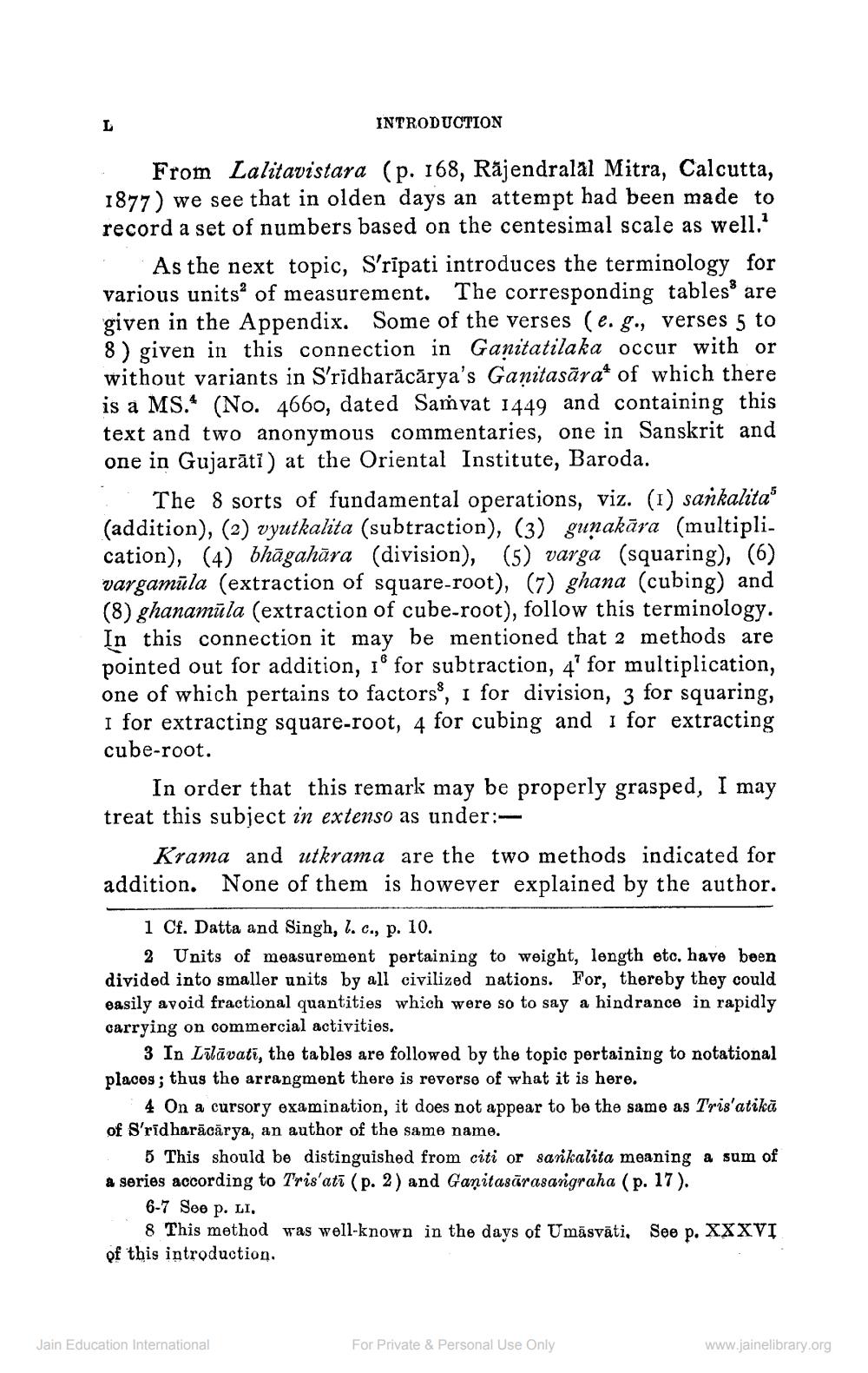________________
L
INTRODUCTION
From Lalitavistara (p. 168, Rajendralal Mitra, Calcutta, 1877) we see that in olden days an attempt had been made to record a set of numbers based on the centesimal scale as well.1
As the next topic, S'ripati introduces the terminology for various units of measurement. The corresponding tables are given in the Appendix. Some of the verses (e. g., verses 5 to 8) given in this connection in Ganitatilaka occur with or without variants in S'ridharācārya's Ganitasära of which there is a MS. (No. 4660, dated Samvat 1449 and containing this text and two anonymous commentaries, one in Sanskrit and one in Gujarati) at the Oriental Institute, Baroda.
The 8 sorts of fundamental operations, viz. (1) sankalita (addition), (2) vyutkalita (subtraction), (3) gunakara (multiplication), (4) bhagahāra (division), (5) varga (squaring), (6) vargamula (extraction of square-root), (7) ghana (cubing) and (8) ghanamula (extraction of cube-root), follow this terminology. In this connection it may be mentioned that 2 methods are pointed out for addition, 1° for subtraction, 4' for multiplication, one of which pertains to factors3, for division, 3 for squaring, I for extracting square-root, 4 for cubing and 1 for extracting cube-root.
In order that this remark may be properly grasped, I may treat this subject in extenso as under:
Krama and utkrama are the two methods indicated for addition. None of them is however explained by the author.
1 Cf. Datta and Singh, l. c., p. 10.
2 Units of measurement pertaining to weight, length etc. have been divided into smaller units by all civilized nations. For, thereby they could easily avoid fractional quantities which were so to say a hindrance in rapidly carrying on commercial activities.
3 In Lilavati, the tables are followed by the topic pertaining to notational places; thus the arrangment there is reverse of what it is here.
4 On a cursory examination, it does not appear to be the same as Tris'atikā of Sridharācārya, an author of the same name.
5 This should be distinguished from citi or sankalita meaning a sum of a series according to Tris'ati (p. 2) and Ganitasarasangraha (p. 17).
6-7 See p. LI.
8 This method was well-known in the days of Umasvati, See p. of this introduction.
Jain Education International
For Private & Personal Use Only
XXXVI
www.jainelibrary.org




